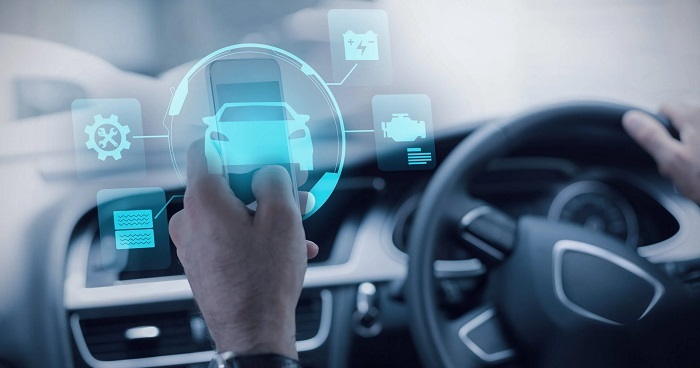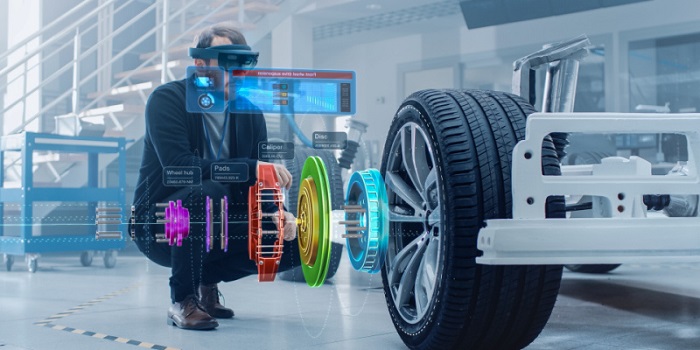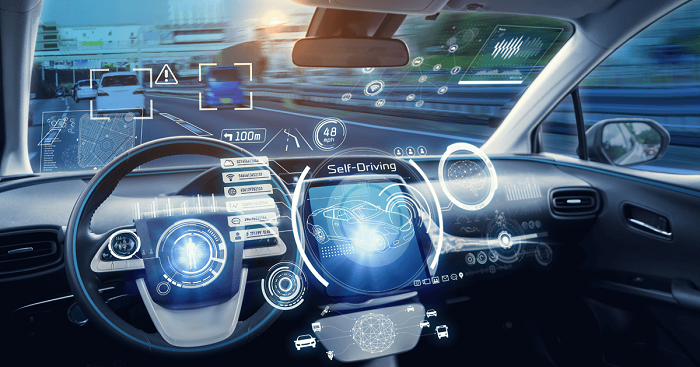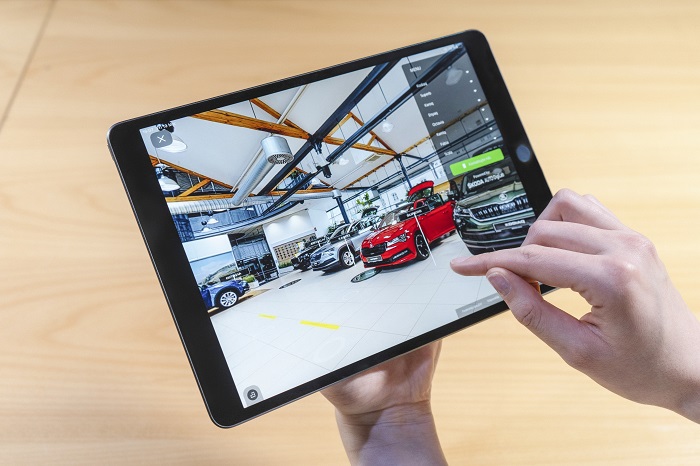Auto
From Bits to Bytes: Digitization in The Automotive Industry

- Automotive industry undergoes profound digital transformation.
- Digitalization revolutionizes design, manufacturing, sales, and customer services.
- Challenges include cybersecurity, data privacy, workforce upskilling.
- Opportunities lie in sustainability, personalization, and new business models.
Digitization is driving a transformation in the automotive industry, changing all phases of the business from design and manufacture to sales and customer support. By combining technologies like artificial intelligence (AI), automation, and data analytics, this innovation wave streamlines procedures, boosts efficiency, and redefines the driving experience. Digitalization is influencing not just the future of cars but also the smarter, more sustainable, and customer-focused mobility solutions that are being made possible by things like robots that can weld automobile bodies with pixel-perfect precision and connected vehicles that gather data in real-time for customized driving experiences.
Shifting Gears: Design and Development
Clay models and physical prototypes are becoming obsolete. Thanks to 3D printing technology and computer-aided design (CAD) software, design cycles may now be finished more quickly and iteratively. Before a single metal sheet is bent, engineers are able to test and refine ideas. These technologies allow for the fabrication of intricate, lightweight designs that improve performance and fuel efficiency, in addition to speeding up the development process.

To identify design defects and ergonomic concerns early on, BMW, for example, uses virtual reality (VR) to replicate driving experiences in various contexts. Porsche uses 3D printing in a similar way to expedite prototyping, saving time and money over more conventional ways.
This digital shift in design extends beyond aesthetics and functionality. Generative design algorithms are exploring new frontiers, optimizing structures for strength and weight based on specific performance parameters. These algorithms can create intricate, organic patterns that may not be possible through traditional design methods, potentially leading to lighter, more fuel-efficient vehicles.
Manufacturing with Precision: The Rise of Industry 4.0
The factory floor is experiencing a metamorphosis. Robots are seamlessly integrated with human workers, performing repetitive tasks with greater precision and speed. Sensors and connected machines collect real-time data, enabling predictive maintenance and minimizing downtime. This “smart manufacturing” approach optimizes production lines, reduces waste, and improves overall efficiency.
Mercedes-Benz, for example, implemented an Industry 4.0 strategy in its Sindelfingen factory, resulting in a 25% reduction in production time and a 10% decrease in energy consumption. The factory features 2,500 robots working alongside human workers, performing tasks like welding and painting with robotic arms that mimic human precision.
However, integrating robots and automation presents challenges. The initial investment can be significant, and upskilling the workforce to adapt to new technologies is crucial. Additionally, ethical considerations regarding job displacement and potential workforce disruption need to be addressed.
Connecting the Car: The Era of the Autonomous Machine
The automobile is no longer just a mode of transport; it’s a rolling data center. Advanced driver-assistance systems (ADAS) are paving the way for autonomous vehicles, relying on a constant stream of data from sensors, cameras, and LiDAR to navigate the environment. Connectivity plays a crucial role, allowing cars to communicate with each other and infrastructure, creating a network of intelligent mobility.
Tesla‘s Autopilot system utilizes data from cameras, radar, and ultrasonic sensors to enable features like lane departure warning and automatic emergency braking. Similarly, Waymo’s autonomous vehicles collect and analyze vast amounts of data to refine their navigation algorithms and improve safety.

The promise of autonomous vehicles is significant. They have the potential to reduce traffic accidents, improve traffic flow, and offer mobility solutions to those who cannot drive themselves. However, significant hurdles remain, including regulatory frameworks, cybersecurity concerns, and the ethical implications of self-driving technology.
Digital Showrooms: Redefining the Buying Experience
The traditional car dealership is evolving. Online platforms featuring virtual tours, augmented reality showrooms, and personalized configurators allow customers to explore and customize vehicles from the comfort of their homes. AI-powered chatbots answer questions and streamline the buying process, while digital financing options offer convenience and transparency.
Volvo, for instance, implemented an online buying platform that allows customers to configure, finance, and purchase a car entirely online. This digital approach not only simplifies the buying process but also provides customers with a more personalized and convenient experience.

Challenges remain in ensuring a seamless online-to-offline experience and addressing the concerns of some customers who prefer the traditional dealership model. Building trust and providing transparent information through digital platforms is crucial for successful customer adoption.
Beyond the Sale: Data-Driven After-Sales
Data collected by connected vehicles offers valuable insights into performance, usage patterns, and potential issues. Predictive maintenance alerts owners to potential problems before they occur, preventing breakdowns and minimizing repair costs. Telematics data also unlocks personalized service experiences, from remote diagnostics to targeted service offers.
BMW ConnectedDrive, for example, uses real-time vehicle data to send alerts to drivers about upcoming maintenance needs and provide personalized recommendations for optimizing fuel efficiency. This data-driven approach not only improves customer satisfaction but also reduces costs for both the customer and the manufacturer.
Data privacy and security are significant concerns in the connected car era. Ensuring robust cybersecurity measures and transparent data handling practices is crucial for building trust with customers and mitigating potential risks.
Challenges and Opportunities: Navigating the Digital Road
Despite the immense potential, digitalization presents challenges. Cybersecurity threats to connected vehicles necessitate robust security measures. Data privacy concerns require ethical and transparent data handling practices. The need for upskilling the workforce to adapt to new technologies must be addressed.
However, the opportunities far outweigh the challenges. Digitalization offers the potential for cleaner, safer, and more personalized mobility solutions. It fosters innovation, boosts competitiveness, and paves the way for sustainable transportation systems.
Environmental Sustainability: Digitalization can significantly contribute to a more sustainable automotive industry. Electric vehicles with optimized battery management systems and connected features can improve energy efficiency and range. Smart traffic management systems powered by data analytics can reduce congestion and emissions. Additionally, 3D printing and lightweighting technologies can lead to the production of lighter vehicles with lower fuel consumption.
However, challenges remain regarding battery recycling infrastructure and ensuring sustainable sourcing of raw materials for electric vehicles. Addressing these challenges is crucial for achieving true sustainability in the digitalized automotive industry.
Personalization and New Business Models: Digitalization opens doors for highly personalized mobility experiences. Cars can be tailored to individual preferences, offering customized driving settings, infotainment options, and connected services. Subscription models and shared mobility solutions can provide flexible and affordable access to vehicles, catering to diverse needs and lifestyles.
These new business models require innovative approaches to data management, user privacy, and security. Collaboration between automakers, tech companies, and startups is crucial for developing and implementing these models effectively.
The Road Ahead: Collaboration and Transformation
The automotive industry is at a crossroads. Embracing digitalization is not an option; it’s a necessity for survival and success. Collaboration between established automakers, tech giants, and startups is crucial for driving innovation and ensuring equitable access to these transformative technologies. Regulatory frameworks need to evolve to keep pace with technological advancements while ensuring safety and ethical data practices.
Governments and industry stakeholders can play a crucial role in fostering collaboration and creating an enabling environment for digitalization. This includes investing in research and development, building digital infrastructure, and developing skills training programs for the workforce.
The future of mobility is digital, and the automotive industry is at the forefront of this exciting transformation. By harnessing the power of digitalization, the industry can not only build better cars but also create a smarter, more sustainable transportation ecosystem for all. This digital revolution is not just about revving up engines; it’s about shaping a future where mobility is seamless, safe, and accessible to everyone. So, buckle up, the ride is about to get a whole lot more digital.
Conclusion:
The role of digitalization in the automotive industry is multi-faceted and far-reaching. It is transforming every aspect of the industry, from design and manufacturing to sales and after-sales services. While challenges exist, the opportunities presented by digitalization are immense. By embracing this digital revolution, the industry can create cleaner, safer, and more personalized mobility solutions for the future. It is a journey that requires collaboration, innovation, and a commitment to ethical and sustainable practices. As we navigate this digital road, let’s ensure that mobility remains a force for good, connecting people and places in a smarter, more responsible way.

























































